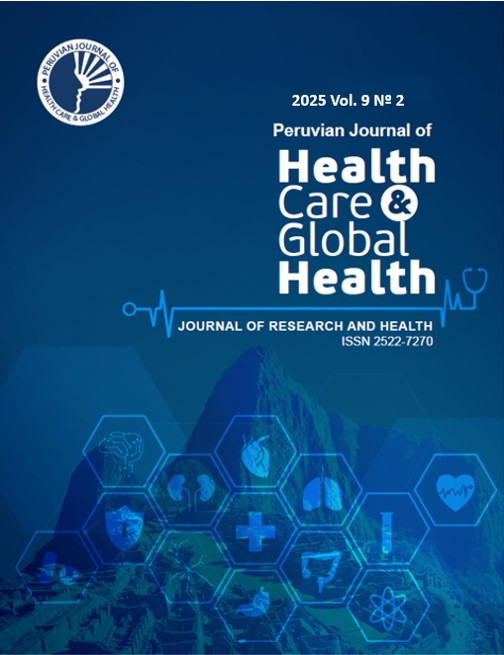Patient profile in emergency departments: Implications for resource management and service planning
Perfil de pacientes atendidos en urgencias: Implicaciones para la gestión de recursos y la planificación de servicios
Abstract
Objective: To determine the epidemiological characteristics of emergency department visits at a private hospital from 2021 to 2023. Materials and methods: This was a retrospective observational study analyzing emergency department visit patterns. Data was extracted from the institution's administrative database. Variables included: ICD-X diagnosis, sex, age, priority level, and period of care. Statistical analysis was performed using Microsoft Excel 365 and Stata v.18.0. Results: Between 2021 and 2023, an average of 72.7 visits per day (95% CI:72.5-72.8) were recorded. Of these, 36.8% involved the pediatric population and 63.2% the adult population. There was higher demand for care in November, December, and January, and Mondays consistently showed the highest number of visits (16.8%). According to the ICD-X classification, Diseases of the Respiratory System (22%) and Injury, Poisoning, and Certain Other Consequences of External Causes (20%) were the most frequent diagnoses among recorded visits. Regarding healthcare coverage, 95% of visits were covered by some type of insurance. For patient discharge, 94.5% of patients were discharged to their homes. Furthermore, the following priority-based service rates were observed: 13.8 per 1000 visits for Priority I and 198.4 per 1000 visits for Priority II. Conclusions: The emergency department predominantly serves an adult population presenting with conditions that are resolved on the same day of care. Keywords: Emergency Service, Hospital; Emergency Medical Services; Epidemiology; Emergency Room Visits (Source: MeSH, NLM).Downloads
Published
2025-07-26
How to Cite
Prudencio-Leon, W. E., & Chavez-Castañeda , C. I. (2025). Patient profile in emergency departments: Implications for resource management and service planning: Perfil de pacientes atendidos en urgencias: Implicaciones para la gestión de recursos y la planificación de servicios. Peruvian Journal of Health Care and Global Health, 9(2). Retrieved from http://revista.uch.edu.pe/index.php/hgh/article/view/336
Issue
Section
Original articles
License
Copyright (c) 2025 Walter Enrique Prudencio Leon

This work is licensed under a Creative Commons Attribution 4.0 International License.
Authors who publish with this journal agree to the following terms:
- The authors will retain their copyright and will guarantee to the journal right of first publication of their work, which will simultaneously be under a Creative Commons Attribution 4.0 License that allows third parties to share the work whenever attribuying their author and first publication in this journal.
- The Author is able to enter into separate, additional contractual arrangements for the nonexclusive distribution of the journal's published version of the Work (e.g., post it to an institutional repository or publish it in a book), as long as there is provided in the document an acknowledgement of its initial publication in this journal.
- Authors are permitted and encouraged to post online a pre-publication manuscript (but not the Publisher’s final formatted PDF version of the Work) in institutional repositories or on their Websites prior to and during the submission process, as it can lead to productive exchanges, as well as earlier and greater citation of published work (see The Effect of Open Access).











